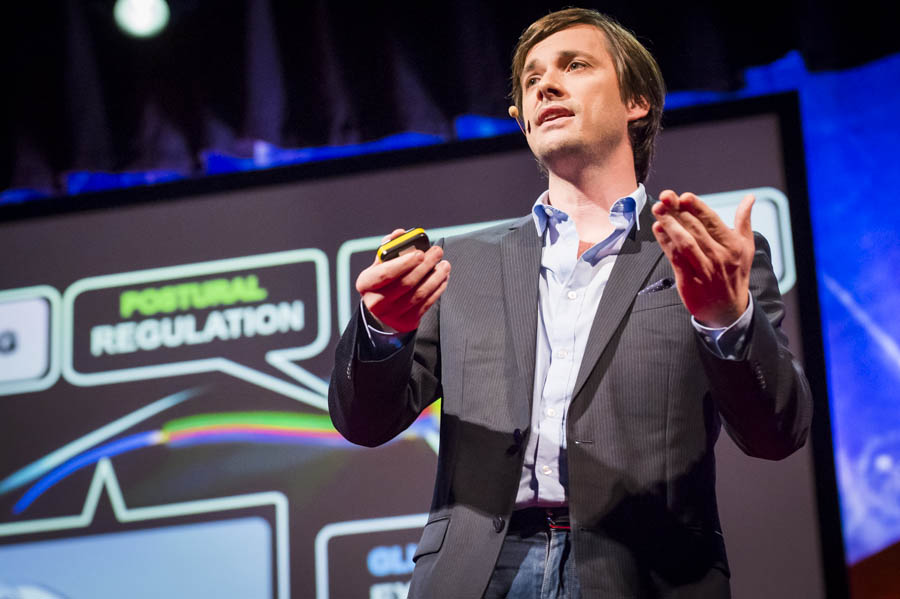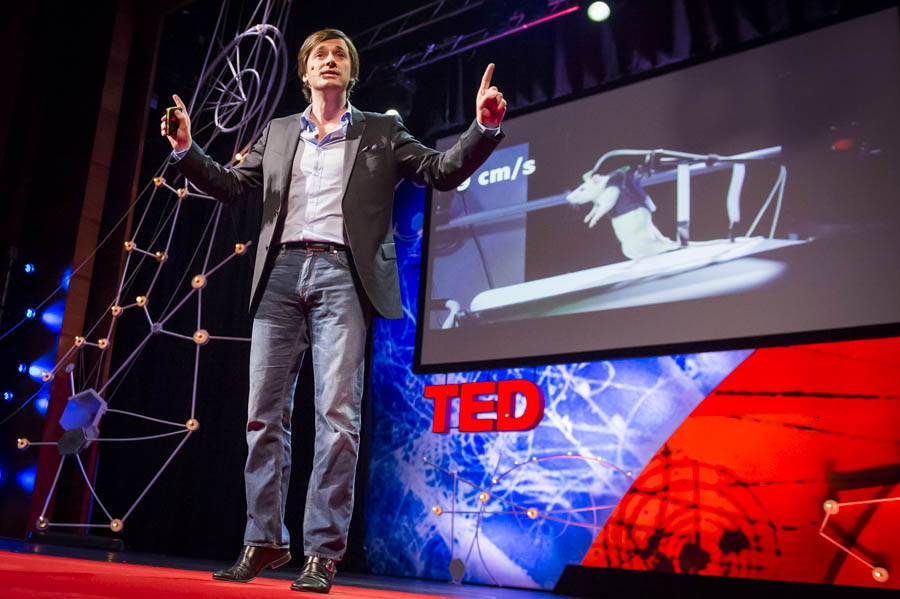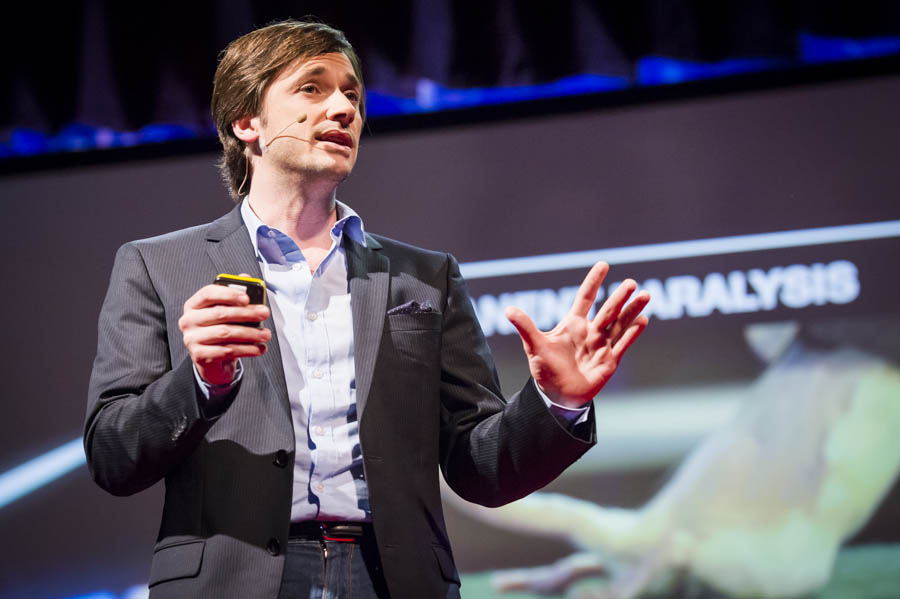Grégoire Courtine is the head of the Center for Neuroprosthetics and Brain Mind Institute of the Life Science School at the Swiss Federal Institute of Technology Lausanne (EPFL). He starts his TED Talk with a story of a mentor of his, the late Christopher Reeve, who spent the last years of his life in a wheelchair after a paralyzing spinal cord injury. A decade ago, the actor and activist inspired the young Courtine by issuing a stern challenge to think beyond the lab, to go to the rehab center, “watch people fighting to take a step” — and then figure out what he could do in the laboratory to make those people’s lives better.
Inspired by the call for pragmatism, Courtine has worked to develop a new approach to treating spinal cord injuries, which affect some 50,000 people around the world each year. Rather than focus on the classic approach of trying to rehabilitate fibers, he tried a different approach, wanting to “reawaken the neural network that coordinates locomotion.”
For the non-neuroscientists among us here at TEDGlobal, he has a “simplistic metaphor to explain a complicated concept” to try and explain. “Imagine the locomotive system is a car,” he says. “The engine is the spinal cord. The transmission is interrupted; the engine is turned off. How can you reengage the engine?” It’s unlikely that he and his team think about their work in anything like these terms, but Courtine sweetly tells us that these kinds of ideas helped them to develop what he calls “electrochemical neuroprosthesis.” After a spinal cord injury, the cells below the lesion are still functional; they’re just not getting signals. Could he figure out how to reactivate them? He shows some film of a paralyzed rat, its legs dragging at first, then walking, then running along a treadmill. Amazing, right? The audience gasps at the video. But, not so fast.
“This locomotion was completely involuntary; the animal had no control over the legs,” says Courtine. “Clearly, the steering system was missing.” So the team challenged itself to develop a new system that eschewed the treadmill that guided an animal’s movement. “This is really cool,” he says excitedly, as he shows us the entirely unobtrusive robot harness that was designed to support the 200 gram rat, allowing it to move in any direction but not forcing it to move, as a treadmill does. The rat has to decide on its own to take a step.
The first results were still disappointing. The same rat that moved so well on the treadmill only five minutes earlier was now unable to take a step. “One of the most essential qualities of a scientist is perseverance,” Courtine laughs. “After seven months of testing, tweaking, and trying new ideas, the otherwise paralyzed rat could stand and, when she decided, sprint or walk.” He shows video of what he describes as the first ever example of voluntary leg movement after a lesion in the spinal cord had caused paralysis. Not only could the rat walk and run, it could even negotiate stairs. *Now* we’re allowed to think this is amazing.
“You’re all wondering, aren’t you? Will this help injured people?” Courtine correctly channels the audience. “Me too, every day.” As every good scientist must be, he is cautious. “The truth is that we don’t know enough yet,” he says. “This is certainly not a cure for spinal cord injury.” But he does allow that it might lead to an intervention to improve people’s quality of life. And his dream is to continue his research to develop a personalized program for anyone suffering from a spinal cord injury, to deliver what he describes as “personalized neuroprosthetics.” This is not, he adds, about replacing lost function, but rather about helping the brain to help itself.
“It is not a matter of whether this revolution will occur, but when,” Courtine concludes. “Remember. We are only as great as our imagination, as big as our dream.” A big standing ovation for the young scientist.>
[To see much, much more detail about Courtine’s ideas and process, see the web documentary, Project Re:Walk.]
Grégoire Courtine’s talk is now available for viewing. Watch it on TED.com »



Comments (2)
Pingback: Paralyzed Rat » 10 Secondes Tigre